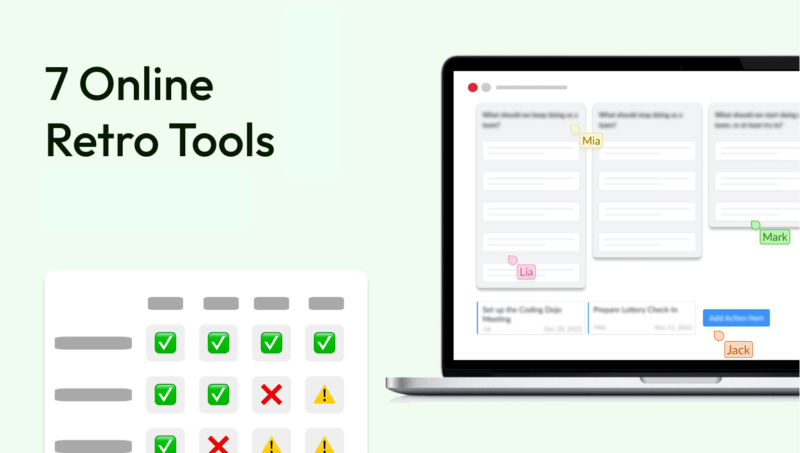There are many approaches to agile transformation. Outlined, we will briefly go over four philosophies and how they differ and work.
The four agile transformation approaches that we will concentrate on are the ones of Deloitte, McKinsey, ISG, and Project Scagile.
Agile transformation approach of Deloitte
"To be effective, new capabilities are needed across business and IT, with impacts on supporting areas"
Deloitte
Deloitte uses its established holistic approach to help organizations become agile. Their holistic agile transformation approach comprises of six pillars and steps:
- Organization design: A horizontal structure that helps increase speed through various factors including smaller IT teams and empowered business roles, such as the product owners.
- Operating model and alignment: A model, based in the future, to help drive alignment across the enterprise through factors such as end-to-end business and IT interaction modeling.
- Architecture and DevOps: A technical foundation supporting change through dev and ops integration, automated and continuous delivery pipeline, productized architecture aligned to business capabilities.
- Coaching: A groundwork of continuous improvement of mindset and maturity in teams through agile coaches, rerouting to transformational leadership, and a model called “coach the coach” speeding up self-sufficiency.
- Team process and practices: A model that helps teams move fast and efficiently through agile tooling standards, need-based agile and engineering practice adoption, and just-enough software development.
- Training: A consistent training and update of the new operating model for staff through real-world training programs, immersive and simulation-based components, and just-in-time approaches to deepen learning.
Agile transformation approach of McKinsey
"Successful transformations start with an effort to aspire, design, and pilot the new agile operating model."
McKinsey
McKinsey helps organizations across the globe in the private, public, social sectors to create “change that matters” most to them. They align with the prospect that a transformation both emphasizes strengths and weaknesses - because then they are three times more likely to succeed.
Their iterative approach consists of two elements - aspire, design, pilot, then scale and improve:
- Aspire, design, and pilot: This approach is a cycle made up of three components continuously going round. Firstly, top-team aspiration stands for aligning and committing to the agile transformation and its vision on senior executive level. Then agile pilots are launched to test the agile operating system within teams. Finally, the blueprint assesses how agile can unlock the most value.
- Scale and improve: This is also made up of three components, but they are not employed in a circle motion. This is about rolling out agile cells. Firstly, design and wave out agile units. Secondly, rewire core processes so they are in line with the agile organisation. Thirdly, build the new capabilities required to sustain agility. The way they organize this is similar to the Spotify model with "tribes" and "squads". It also reminds me of the Scaled Agile Framework SAFe.
Agile transformation approach of ISG
"Governance is established to address the level of standards and requirements across the environment."
ISG
ISG is a global technology research and advisory firm with the will to manage risks for companies.
Their agile transformation approach consists of five steps. As Deloitte, they believe that agile should be addressed holistically:
- Align technology to business capabilities: How technology is consumed by the product or business capabilities. Generally, reflecting how business is run. Result: portfolio of products and performance frameworks. This step is comparable to value stream mapping within the Scaled Agile Framework SAFe.
- Identify business and technology leaders: Building a culture aligned to IT and business - counterpart and technology leaders. In order for agile to be properly conducted in a team, the business and technology owners must need to establish concise objectives. Business partnership is imperative.
- Start small and then expand: Define the MVP (minimum viable product) team model and agility approach. The aim is for continuous improvement of the model as the teams expand and mature. Utilize a small group of teams to set clear objectives. Coming together with all teams to pursue unique perspectives and cross-functional groups. This step is similar to the first step of McKinsey’s approach.
- Launch teams and continually improve: Engage and coach each team in agile methods. Take time to assess conditions. Continuously improve teams and their understanding of roles and responsibilities, product team model, and agile practices, meaning constant education and training at hand.
- Continually improve governance model: Performance and adoption combined mean continuous improvement of the model. Creation of a baseline of team performance using three performance indicators of technology products:
a) Business Metrics
b) Development metrics
c) Operating metrics
This stage is all about continuous improvement of processes and team skills through practice. Formation of communities to discuss, review, assess both negative and positive results.
Agile transformation approach from Project Scagile
Although Project Scagile does not really give a clear approach, it deserves an honorable mention.
Project Scagile is an initiative dedicated to providing the world with a high quality and free online training on the subject of "agile scaling".
Based on interviews with international experienced practitioners, it offers seven different free (SAFe®) webinars that are held regularly - and pretty entertaining:
- How to start scaling agile the right way
- How to align leadership within agile transformation
- How to align teams around value
- How to transform culture within agile transformation
- How to align hundreds of teams horizontally around one goal
- What are good agile metrics within agile transformation?
- Getting the most important ceremony in agile right
As you can see, this one could also be interesting when searching for “agile training product owner” or “agile training scrum master”, but it rather focuses on the scaled agile level. If you are looking for a certificate, it is not the right one - so far, they are not providing certification. It still provides you with great insights. Check out the Project Scagile website to learn more.
Agile transformation approaches - A comparison of the four models
To summarize, there are many similarities between these models and other models like Large scale scrum or the Scaled Agile Framework SAFe :
- Starting small and experimenting is generally recommended!
- Setting agile metrics helps to manage changes
- Organizing around value and rethinking where exactly the revenue is generated is an important step
- After the experimentation phase, slowly start to scale step by step, continuously improving
- Have well trained coaches that act as ambassadors and change agents with the agile transformation
There are also some differences:
- Deloitte focuses on the organizational side of things and training the coaches in transitioning team processes
- McKinsey transforms organizations through a simple two step process. They are mostly centred around building and designing where the teams are not so present in the process
- ISG takes a holistic approach putting continuous improvement at the core of things. They enable teams to take the lead and constantly engage in agile methods
Conclusion
I hoped you liked my article! If you are interested, you can find more agile transformation approaches and philosophies in my article on the comparison of different Agile Transformation Roadmaps.









